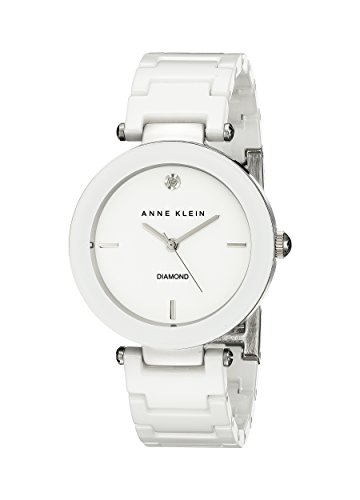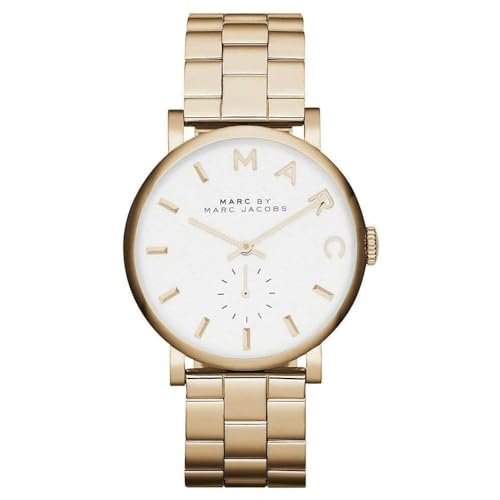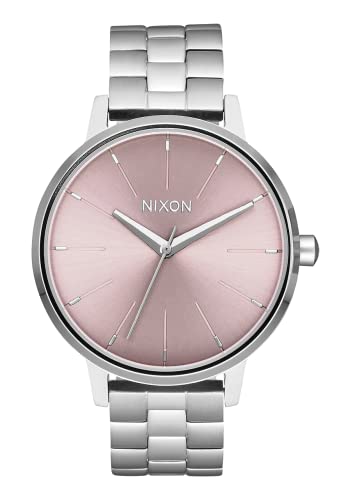If you have a ceramic watch and need to reset the chronograph, don’t worry, we’ve got you covered. Our step-by-step guide will help you navigate through the process with ease. We understand that ceramic watches are cherished for their durability and stylish appearance, which is why we want to ensure that you can reset the chronograph without any hassle. By following our guide, you’ll be able to maintain the functionality of your watch and keep it looking pristine.
Top Ceramic Timepieces
Check the User Manual
- Consult the user manual: Before attempting to reset the chronograph on your ceramic watch, refer to the user manual for instructions.
- Identify your watch model: Make sure you have the correct instructions for your specific watch model as different models may have slightly different procedures.
- Locate the section on resetting the chronograph: Look for the chapter or section in the user manual that provides instructions on how to reset the chronograph.
- Read the instructions carefully: Take the time to read the instructions thoroughly to understand the steps involved in resetting the chronograph.
- Follow the step-by-step procedure: Execute the necessary steps precisely as mentioned in the user manual to avoid any potential damage to your watch.
- Take note of any additional guidelines: Pay attention to any specific guidelines or tips mentioned in the user manual that may aid you in resetting the chronograph successfully.
Stop the Chronograph
To reset the chronograph, stop it if it’s currently running. Locate the button on your watch that controls the chronograph function and press it firmly to stop the stopwatch. By doing this, you ensure that the chronograph hands are aligned correctly before proceeding with the reset.
After you have stopped the chronograph, carefully look for the reset button on your watch. This button is usually located near the chronograph control button. Once you have found it, press and hold the reset button for a few seconds. As you hold it, you will notice that the chronograph hands start to move back to their original positions. Keep holding the reset button until the hands have completely reset. This will ensure that the chronograph is ready for its next use with accurate timing.
Reset the Chronograph Hands
- Stop the chronograph by pressing the stop button or using the designated controls.
- Locate the reset button, which is typically positioned near the chronograph controls.
- Press and hold the reset button until the chronograph hands start to move.
- Continue holding the reset button until the hands return to their original positions.
- Release the reset button once the chronograph hands are aligned.
Note: Different watch models may require multiple presses of the reset button before the hands reset completely. Repeat steps 3 and 4 as necessary until all hands are back in their starting positions.
- After resetting the chronograph hands, check if they are synchronized with the time displayed on the watch.
- If needed, adjust the time by pulling out the crown and rotating it clockwise or counterclockwise.
- Push the crown back in when the correct time is set.
- Ensure the chronograph is properly reset and the watch is functioning as desired.
Adjust the Time
- To adjust the time on your watch after resetting the chronograph hands, follow these steps:
- Pull out the crown: Locate the crown on the side of your watch and gently pull it out to the time adjustment position. Make sure you don’t apply too much force to avoid damaging the mechanism.
- Rotate the crown: Once the crown is in the time adjustment position, rotate it either clockwise or counterclockwise to set the correct time on your watch. Keep a close eye on the hour, minute, and second hands as you make the adjustments.
- Push the crown back in: After you have set the correct time, push the crown back in gently to secure the setting. Make sure it is pushed all the way in to ensure the watch functions properly.
- Don’t forget these additional tips for adjusting the time on your watch:
- Be precise: Take your time to set the correct time accurately. Pay attention to the minute and second hands to ensure a precise adjustment.
- Avoid rapid adjustments: When rotating the crown, do so in a slow and deliberate manner. Rapid adjustments can affect the accuracy and functionality of the watch.
- Refer to the user manual: If you encounter any difficulties or specific instructions for your watch model, it’s always a good idea to refer to the user manual provided by the manufacturer. It may contain specific information or precautions that are important to follow.
Remember, adjusting the time on your watch ensures that it accurately reflects the current time and allows you to have a reliable timekeeping experience.
Check the Chronograph Functionality
- Press the chronograph button to start the stopwatch: Begin by locating the chronograph button on your ceramic watch. Press this button firmly to activate the stopwatch function. Observe the movement of the chronograph hands to ensure that they start smoothly and accurately. Pay close attention to any signs of hesitation or jerking in their motion.
- Stop and reset the chronograph multiple times: Once the stopwatch is running, press the chronograph button again to stop the timing. Take note of how quickly the hands come to a halt and if they align precisely with the markings on the watch’s dial. To reset the chronograph, look for a separate button, usually located near the chronograph button. Press this button firmly to bring the chronograph hands back to their starting position. Repeat this process several times to confirm that the chronograph resets correctly each time, and that there are no irregularities in its functioning.
Remember, testing the functionality of your ceramic watch’s chronograph is crucial to ensure its accurate and reliable performance. By pressing the chronograph button to start and stop the stopwatch, and verifying that the hands move smoothly and reset correctly, you can be confident in the proper functioning of this important feature on your watch.
Resetting the Chronograph
In conclusion, resetting the chronograph on your ceramic watch is a straightforward task that can help you ensure its accuracy and functionality. By referring to your watch’s user manual for specific instructions and following the steps outlined in this blog post, you can easily reset the chronograph and enjoy the full potential of your ceramic watch.
Mastering Chronograph Functions
Guide to resetting the Chronograph hands on a Moonswatch
Step-by-Step Guide to Using Ceramic Watches
- Choose a ceramic watch with a design and style that appeals to you
- Familiarize yourself with the features and functions of the watch, such as chronograph, date display, or dual time zone, if applicable
- Ensure that your ceramic watch is properly sized to fit your wrist comfortably. If it requires adjustment, take it to a professional watchmaker or jeweler
- Clean your ceramic watch regularly by gently wiping it with a soft microfiber cloth to remove dust and dirt
- Avoid exposing your ceramic watch to extreme temperatures, high heat, or sharp impacts, as this may damage the ceramic material
- If your ceramic watch has a water-resistant rating, ensure you understand its limitations and avoid submerging it beyond its stated depth
- Store your ceramic watch in a cool, dry place when not in use to prevent any potential damage or scratching
- Keep in mind that ceramic watches are generally more resistant to scratches and fading compared to other materials, but it’s still important to handle them with care
- If you experience any issues with your ceramic watch, consult the manufacturer’s instructions or take it to an authorized service center for repairs or maintenance
Answers to Frequently Asked Questions about Ceramic Watches
How does the price of ceramic watches compare to other materials?
The price of ceramic watches tends to be higher compared to watches made from other materials. Ceramic is a popular choice for luxury watches due to its durability, scratch-resistance, and sleek aesthetics. The manufacturing process involves high precision and requires specialized expertise, which contributes to the higher price tag. Other materials such as stainless steel, titanium, or even certain types of plastic may be less expensive options in comparison. However, it is important to note that the price can vary depending on the brand, design, complications, and overall quality of the watch.
Are ceramic watches water-resistant?
Yes, ceramic watches can be water-resistant. Ceramic is a highly durable material that is known for its resistance to water, scratches, and fading. Many watch manufacturers use ceramic in the construction of their watches to provide a high level of water resistance. However, the specific water resistance rating of a ceramic watch may vary depending on the brand and model. It is important to check the watch’s specifications or consult the manufacturer to determine the exact water resistance capabilities of a particular ceramic watch.
What are ceramic watches and how are they different from other materials?
Ceramic watches are timepieces that have cases, bracelets, or bezels made predominantly from ceramic materials. These watches are different from those made from other materials, such as stainless steel or titanium, in several ways.
Firstly, ceramic watches have a unique aesthetic appeal. The ceramic material used in these watches gives them a sleek, smooth, and glossy look, often available in various colors. This makes them highly desirable for those seeking a modern and stylish timepiece.
Secondly, ceramic is highly durable and scratch-resistant. Unlike materials like stainless steel or gold, ceramic watches are less likely to show signs of wear and tear over time. This resilience to scratches ensures that the watch will maintain its pristine appearance for a longer period.
Furthermore, ceramic watches are hypoallergenic, making them suitable for individuals with sensitive skin. Unlike watches with metal bracelets that may cause allergic reactions, ceramic does not contain materials that commonly trigger allergies, such as nickel.
In terms of weight, ceramic watches are usually lighter than their counterparts made from metals like stainless steel or titanium. This lightweight characteristic provides added comfort when wearing the watch for an extended period.
Additionally, ceramic is highly resistant to heat and corrosion, making it an excellent choice for watches that may be exposed to extreme conditions. The material does not easily tarnish or fade, ensuring the watch remains visually appealing even after prolonged exposure to environmental factors.
It is important to note that while ceramic watches offer numerous advantages, they can be more brittle compared to metal watches. While they are less prone to scratches, they can be more susceptible to cracking or shattering if dropped or subjected to significant impacts.
Overall, ceramic watches offer a combination of durability, elegance, and low maintenance, making them an attractive option for watch enthusiasts looking for a unique and long-lasting timepiece.


















